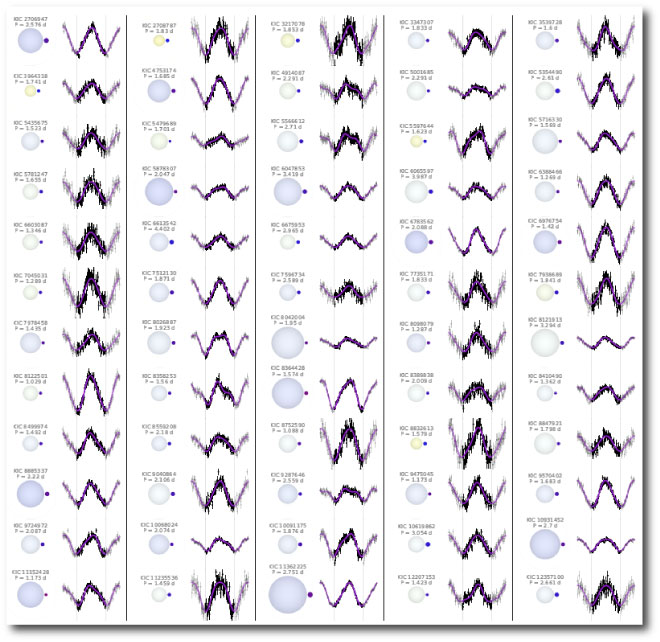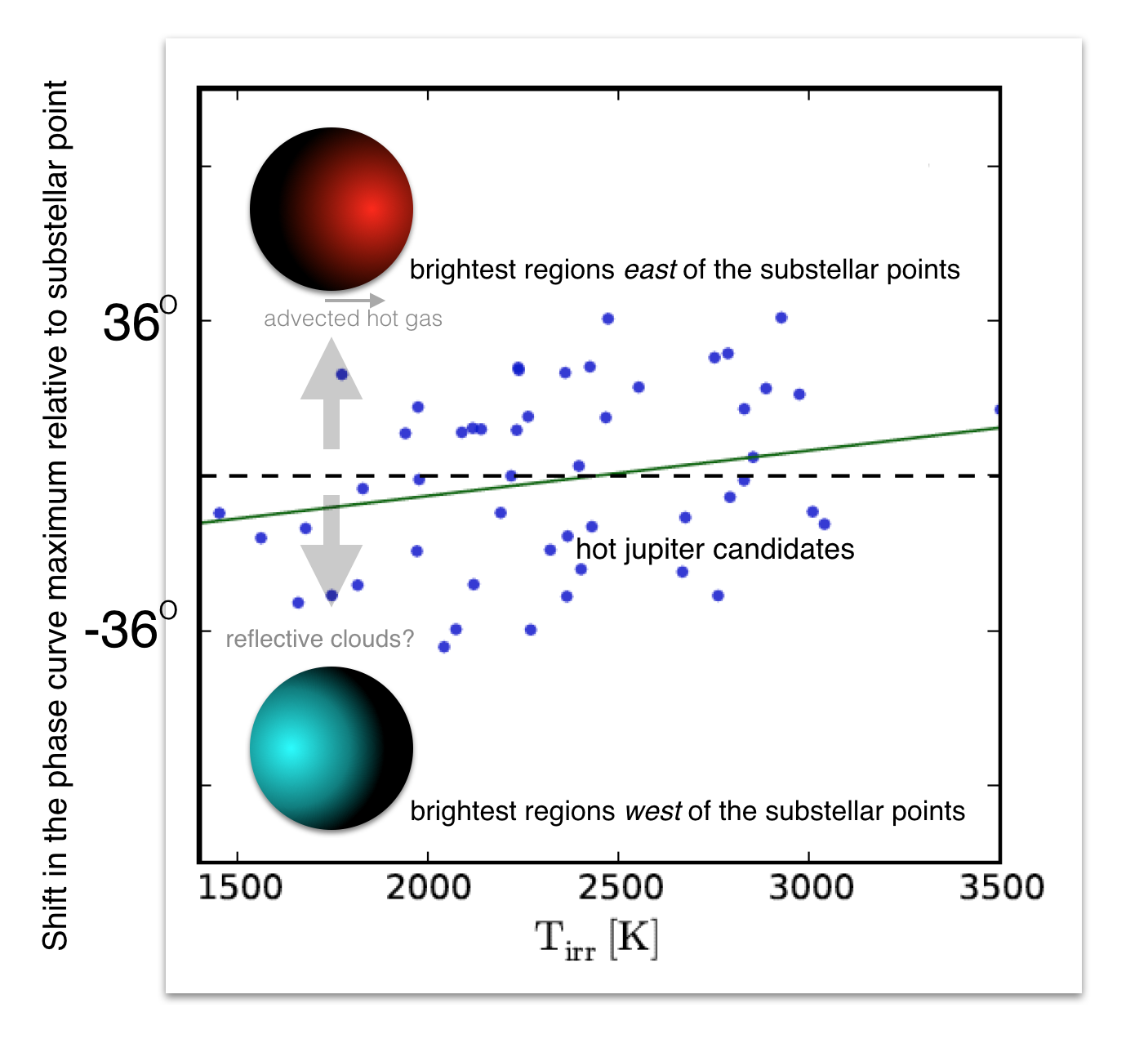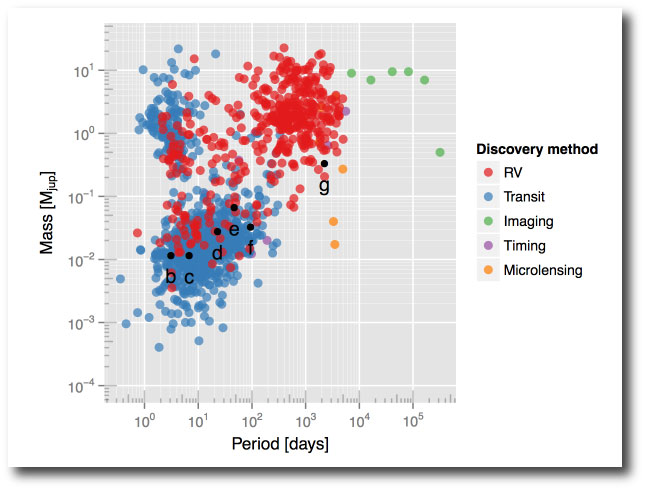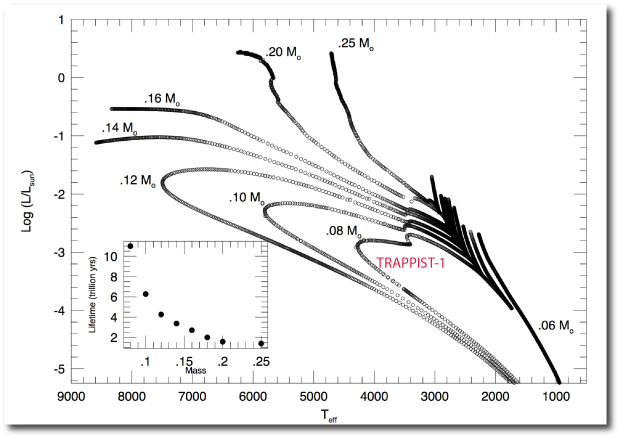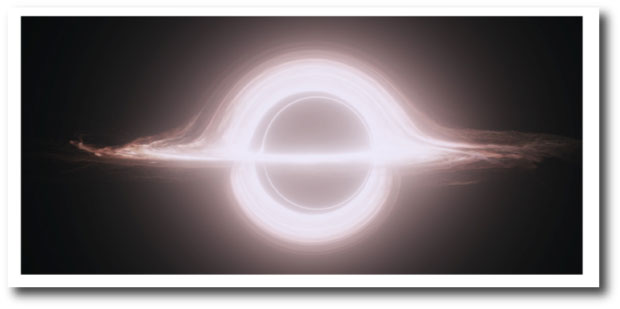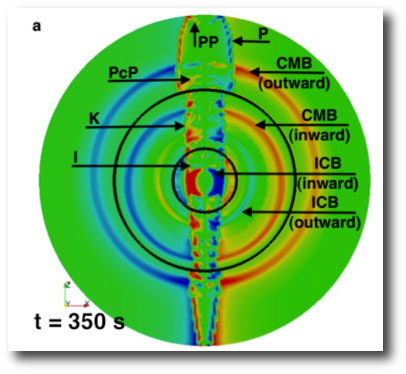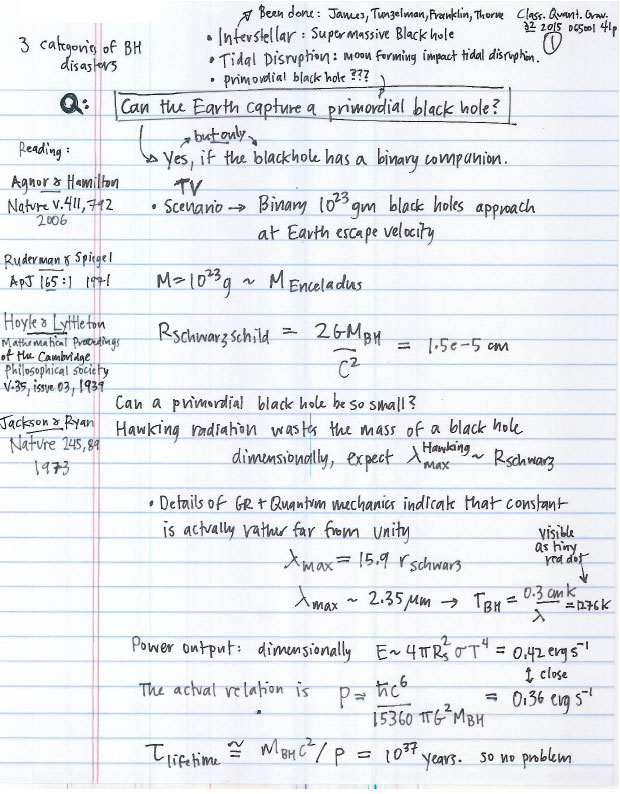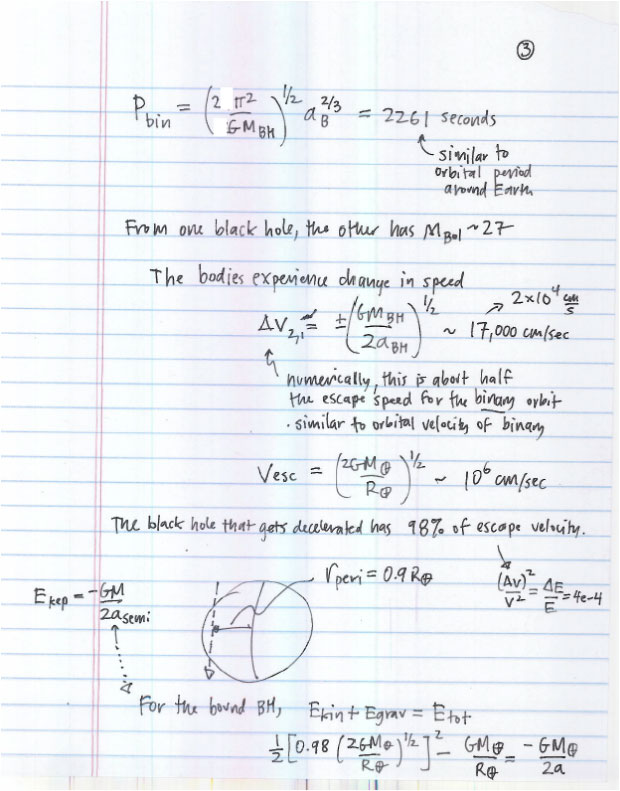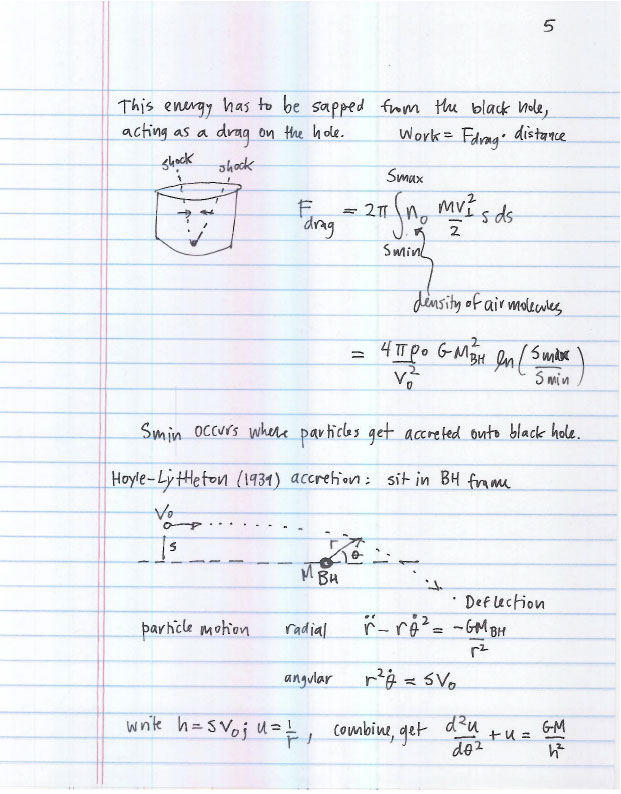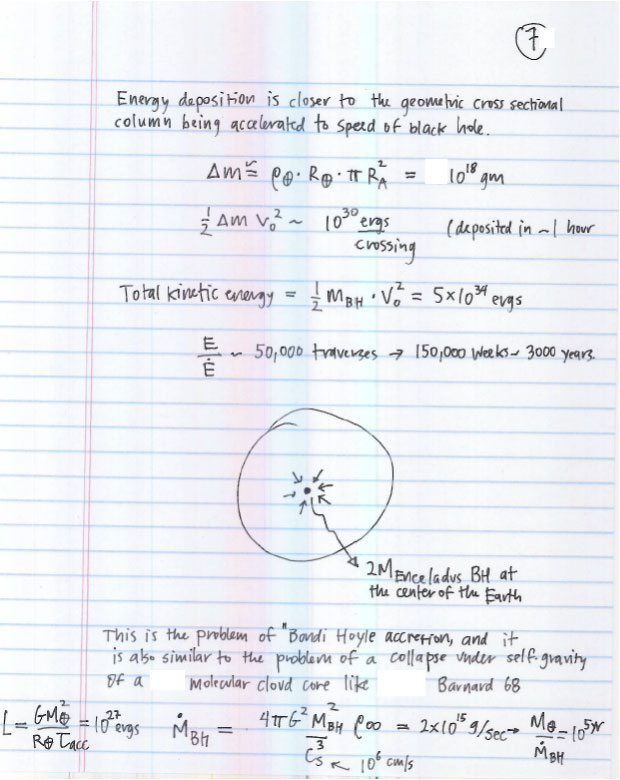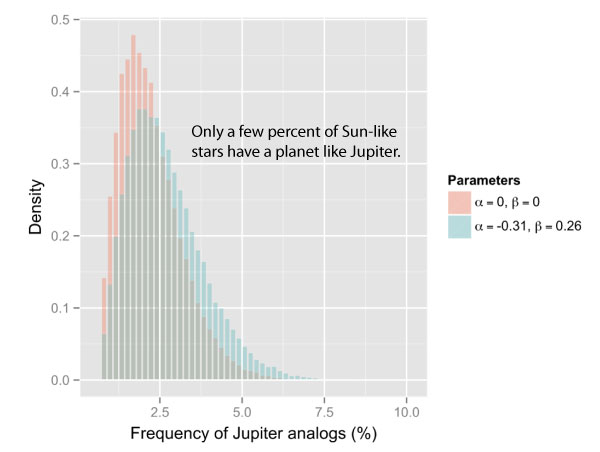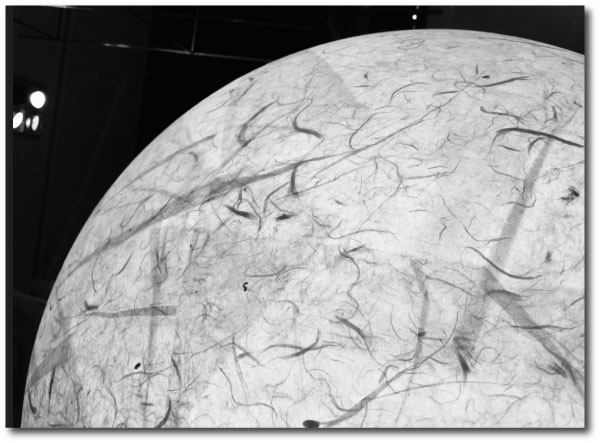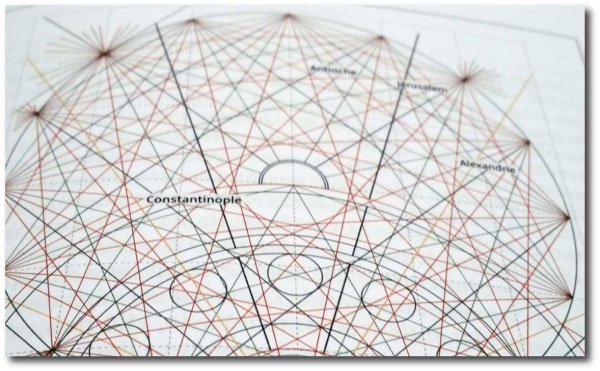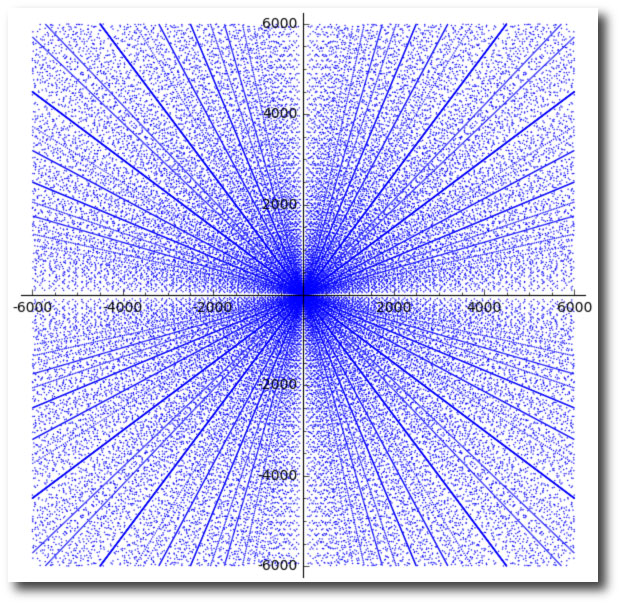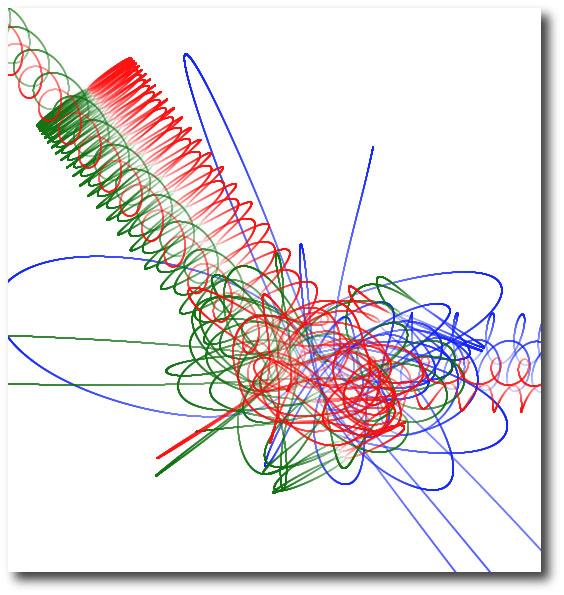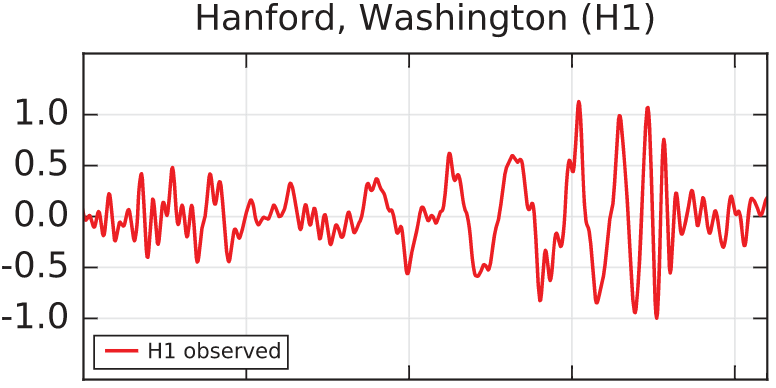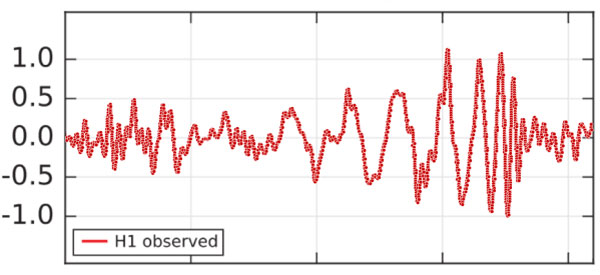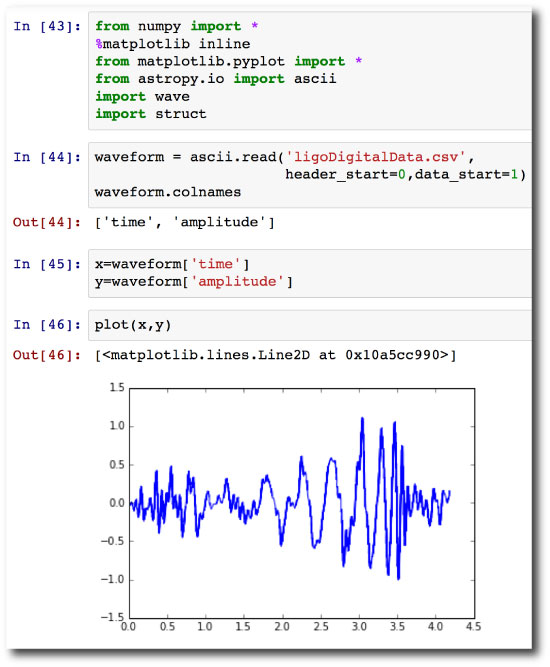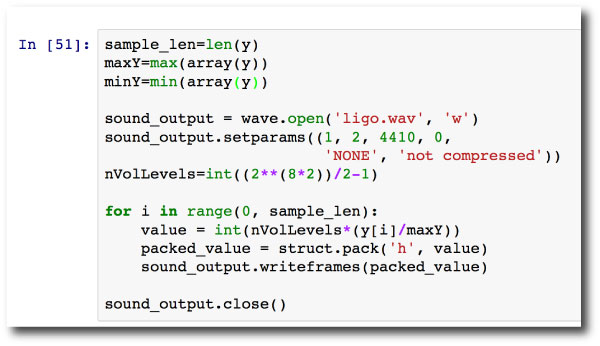
A year ago, last January, Konstantin Batygin and Mike Brown lit up the Internet with their dossier of evidence for Planet Nine. Their conclusion was electrifying: An as-yet undetected super-Earth may be lurking a light week away in an eccentric orbit far beyond Neptune. Their article in the Astronomical Journal generated intense interest, including 311,371 (and counting) downloads of a .pdf containing a bracing dose of secular perturbation theory, along with push notifications from the likes of the New York Times and NPR to devices worldwide.
A solar system super-Earth would be extraordinary for a whole slew of reasons. Indeed, an astronomical problem of any stripe that is at once so compelling and potentially so dramatically resolvable comes along extremely rarely. The disparate clues that spurred development of the six-parameter lambda-CDM cosmological model form the only relatively recent example that I can think of. Planet Nine, however, does concordance cosmology one better by demanding six orbital elements plus a mass, and in addition, it’s not “big science”. At magnitude V~23, there are a whole range of telescopes that can potentially spot it. This low barrier to entry exerts a unique hold on one’s interest.
As 2017 gets underway, it’s a good time to review some of the Planet Nine developments that have occurred over the past year. In particular, what are the odds that it’s out there, and how close are we to establishing whether it actually exists? My feeling is that right now, the chance of a big announcement is peaking at a somewhat less than 1% per day.

The outer solar system is neither empty nor unsurveyed. Over two thousand trans-Neptunian bodies are now tracked and listed by JPL and by the Minor Planet Center. Many of these objects are minor indeed, with diameters no more than a few hundred kilometers across, despite being visible at distances out to roughly 100 AU. It thus seems counter-intuitive that a full-blown super-Earth could go undetected in the midst of such a crowd. Yet because we’re dealing with the Sun’s reflected light, the falloff in apparent brightness in the outer solar system with distance is severe, going as 1/r^4. If Neptune were lofted from 30 to 900 AU distance, its apparent brightness in our skies would decrease by a factor of 30^4=810,000, a near-millionfold hit that would place it near the 23rd magnitude. Last year, I wrote,
As for the planet itself? A frigid as-yet unseen world with ten times the mass of Earth. Its twenty thousand year orbit is eccentric, and at aphelion it languishes with 500 m/s speed, drifting slowly against the spray of background stars. Its cloud tops glow in the far infrared, a mere 40 Kelvin above absolute zero. At the far point of its orbit, it is invisible to WISE in all its incarnations, and far fainter than the 2MASS limits. Obscure. In the optical, it reflects million-fold diminished rays of the distant Sun to shine in the twenty fourth magnitude. Dim, indeed, but not impossibly dim… Traces of its presence might already reside on the tapes, in the RAID arrays, suspended in the exabyte seas, if one knows just where and how to look.
Or, more succinctly, its brightness depends on albedo (reflectivity), radius, and its current distance via

A handful of Kuiper Belt Objects have been found that are as dim or even dimmer than Planet Nine is expected to be. Trujillo and Sheppard’s discovery paper for 2012 VP 113 gives the details of how one such search was carried out. A wide-field camera on a large telescope takes repeated pictures of regions of the sky located “at opposition”, roughly 180 degrees away from the Sun. For VP 113, this was done using the DECam at CTIO, which has a 2.7 square-degree field of view and was exposed long enough so that 50% of the 24.5th magnitue objects present in the field would register on each image. Three images spanning about 3.5 hours in total were taken of each field and then inspected for moving objects by a computer. A fraction of the motion on the sky stems from the orbital trajectory of the distant object, but much more importantly, it also arises from the parallax shift generated by Earth’s motion. For an object at 100 AU, this amounts to 1.25 arc seconds per hour, whereas a body orbiting out at 1000 AU will move 0.125 arc seconds per hour. Planet Nine thus moves so slowly that many conventional KBO surveys, while sensitive enough to detect its reflected light, observe with a cadence that is too high to catch its motion. To find it using a wide-field camera, one is best-off taking images separated by at least a full night.

If Planet Nine is out there, it also produces its own infrared radiation. In this article, Jonathan Fortney and collaborators used their atmospheric modeling software to compute what Planet Nine might look like across a full range of wavelengths. The take-away is that with an intrinsic temperature of roughly 40K, Planet Nine’s atmosphere is likely cold enough for methane to condense out into layer of clouds. Rayleigh scattering from pristine hydrogen-rich air above the clouds would thus render the planet quite reflective at optical wavelengths, modestly boosting its detectability over a Neptune-clone at similar distance. Methane condensation also leads to a planet that is potentially twenty orders of magnitude brighter at 3.5 microns than a 40K black body would lead one to expect, generating daunting long-shot odds that it might be visible in the WISE satellite’s W1-band data sets. Aaron Meisner led an effort to very carefully sift the WISE data for a detection. And although their initial survey of 2,000 square degrees has turned up null, they report that they are in the process of extending the search to the full sky.
Planet Nine’s gravitational influence falls off less quickly with distance than does its reflected light. Neptune’s 1846 discovery, furthermore, presents an intriguing precedent. Neptune’s sky position was readily pinned down via its gravitational effects, despite the fact that its orbit was only roughly approximated. Perhaps something similar can be done to pinpoint the current direction to Planet Nine.
Any object orbiting beyond the Kuiper Belt is far enough away that over a time scale measured in years or even decades, its position is effectively static. As a result, Planet Nine would produce an essentially fixed tidal acceleration across the inner solar system. If it is 900 AU away and has ten Earth masses, the Earth experiences a component of acceleration toward it of 2×10^-11 cm/s^2, amounting to a displacement, d=1/2at^2 of roughly a football field per year. As far as our space situational awareness goes, 100 meters is quite a lot. The problem, however, is the entire solar system is being drawn toward planet Nine, and one needs to look for the differential — tidal — acceleration. For example, if Planet Nine currently lies in the direction of Saturn, then Saturn, being closer, will accelerate toward Planet Nine ~2% faster than they Earth does, and over time, sensitive measurements can potentially tease this out.
A few weeks after the appearance of the Batygin-Brown paper, Agnes Fienga and collaborators published a much-discussed paper that hinted at a possible sky position for Planet Nine. Their analysis used telemetry sent back over the years by the Cassini probe, which has been orbiting in the Saturnian system since 2004. Cassini’s ranging data give a very precise location for the spacecraft, and by extension, they transmit precise locations for Saturn. Saturn’s location, in turn, depends on how it is being accelerated by everything else in the solar system and beyond, including Planet Nine (if it’s out there). Fienga et al. discovered that they could get a modest yet tantalizing improvement in their model fit’s residuals to the Cassini probe’s ranging data if they added Planet Nine to their model at a location on the fiducial Batygin-Brown orbit at a current distance of ~622 AU from the Sun in the direction of the constellation Cetus:
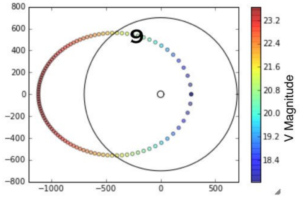
In the weeks after the publication of the Fienga et al. paper, JPL issued a press release stating that “NASA’s Cassini spacecraft is not experiencing unexplained deviations in its orbit around Saturn.” In October, a JPL team led by William Folkner presented a poster paper at the Pasadena DPS meeting that made the case that the Cassini residuals show no signal from Planet Nine. They found that if it exists on the Batygin-Brown orbit, it needs to have either a mass lower than the 10 Earth mass value suggested by Batygin and Brown, or alternately, a current location near aphelion at a distance of 1,000 AU or more. A detailed paper from this group is rumored to be forthcoming.
In March, Renu Malhotra, Kathryn Volk, and Xianyu Wang posted a paper to arXiv that pointed out a remarkable, and until-then unnoticed fact:
The four longest period Kuiper belt objects have orbital periods close to integer ratios with each other. A hypothetical planet with orbital period ?17,117 years, semimajor axis ?665 AU, would have N/1 and N/2 period ratios with these four objects. The orbital geometries and dynamics of resonant orbits constrain the orbital plane, the orbital eccentricity and the mass of such a planet, as well as its current location in its orbital path.
This seemed like a critical, potentially breakthrough-level clue, and I have spent the last couple months working with Yale graduate student Sarah Millholland to see whether more detail — and in particular, a definitive sky location — can be teased out of the ideas presented in Malhotra et al.’s paper. Our own paper will appear soon in the Astronomical Journal, and is currently available on arXiv.
The real number line is dense with integer ratios, and the orbital periods of the most distant and most recently discovered Kuiper belt objects are not all that well determined. It thus seems possible that the period ratios of the known KBOs might simply have arisen by chance. We devised a Monte-Carlo simulation to determine the odds, and the answer is encouraging: there’s less than a 2% chance that we’re looking at a random distribution. It’s very plausible that Sedna is in 3:2, 2000 CR105 is in 5:1, 2012 VP113 is in 4:1, 2004 VN112 is in 3:1, and 2001 FP 185 is in 5:1 resonance with something having an orbital period of 16,725 years and a semi-major axis a~654 AU.
If this hypothesis is to work out, the unseen perturbing body needs to have the right orbit, the right location, and the right mass to maintain the resonances and keep the apsidal alignment of the distant KBO population intact. We carried out a sobering 3×10^17 ergs worth of integrations to pin down Planet Nine’s likely sky position, current distance, and visual magnitude. In short, if it’s out there, it’s probably just dimmer than V=23, 950 AU away, near the celestial equator, and at a right ascension of roughly 40 degrees. If asked for the odds that it’ll be found within 20 degrees of this spot, I would cite that most perfectly frustrating of percentages, 68.3.
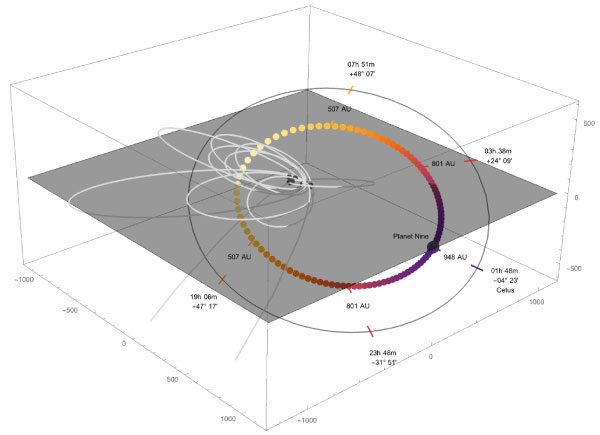
Sarah has put together a manipulable 3D model of the orbit, along with more discussion. Until the real thing shows up, it’s the premiere Planet Nine destination.


